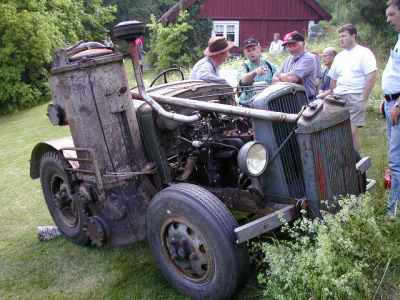Every now and then in histories of the 20th’s century’s earlier years, you will see pictures of cars and commercial vehicles equipped with bulky drums, contraptions to make their fuel from waste wood. These are portable gas generators known as gasifiers, and to show how they work there’s [Greenhill Forge] with a build video.

When you burn a piece of wood, you expect to see flame. But what you are looking at in that flame are the gaseous products of the wood breaking down under the heat of combustion. The gasifier carefully regulates a burn to avoid that final flame, with the flammable gasses instead being drawn off for use as fuel.
The chemistry is straightforward enough, with exothermic combustion producing heat, water vapour, and carbon dioxide, before a further endothermic reduction stage produces carbon monoxide and hydrogen. He’s running his system from charcoal which is close to pure carbon presumably to avoid dealing with tar, and at this stage he’s not adding any steam, so we’re a little mystified as to where the hydrogen comes from unless there is enough water vapour in the air.
His retort is fabricated from sheets steel, and is followed by a cyclone and a filter drum to remove particulates from the gas. It relies on a forced air draft from a fan or a small internal combustion engine, and we’re surprised both how quickly it ignites and how relatively low a temperature the output gas settles at. The engine runs with a surprisingly simple gas mixer in place of a carburetor, and seems to be quite smooth in operation.
This is one of those devices that has fascinated us for a long time, and we’re grateful for the chance to see it up close. The video is below the break, and we’re promised a series of follow-ups as the design is refined.
Continue reading “Keep That Engine Running, With A Gassifier”












